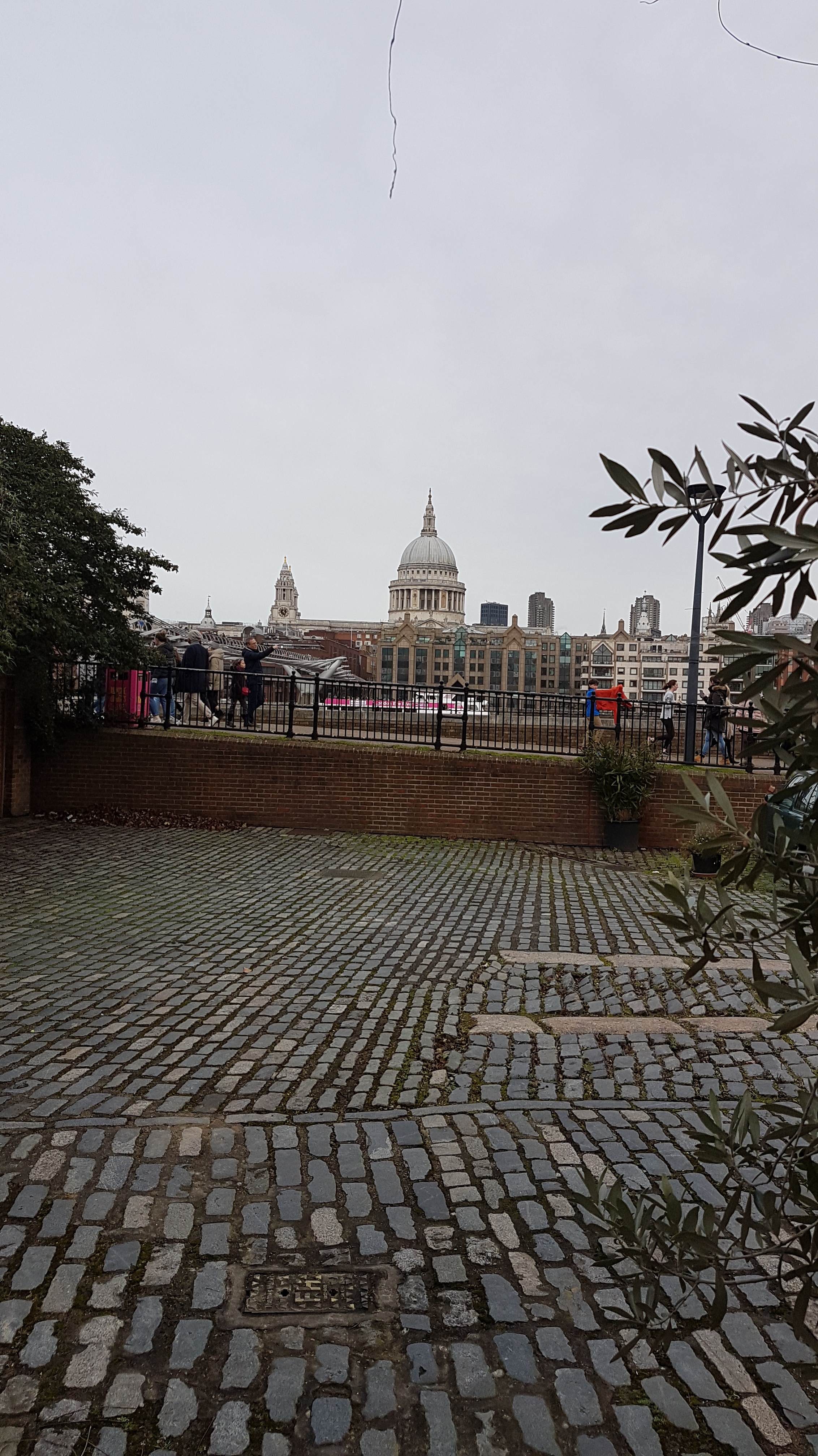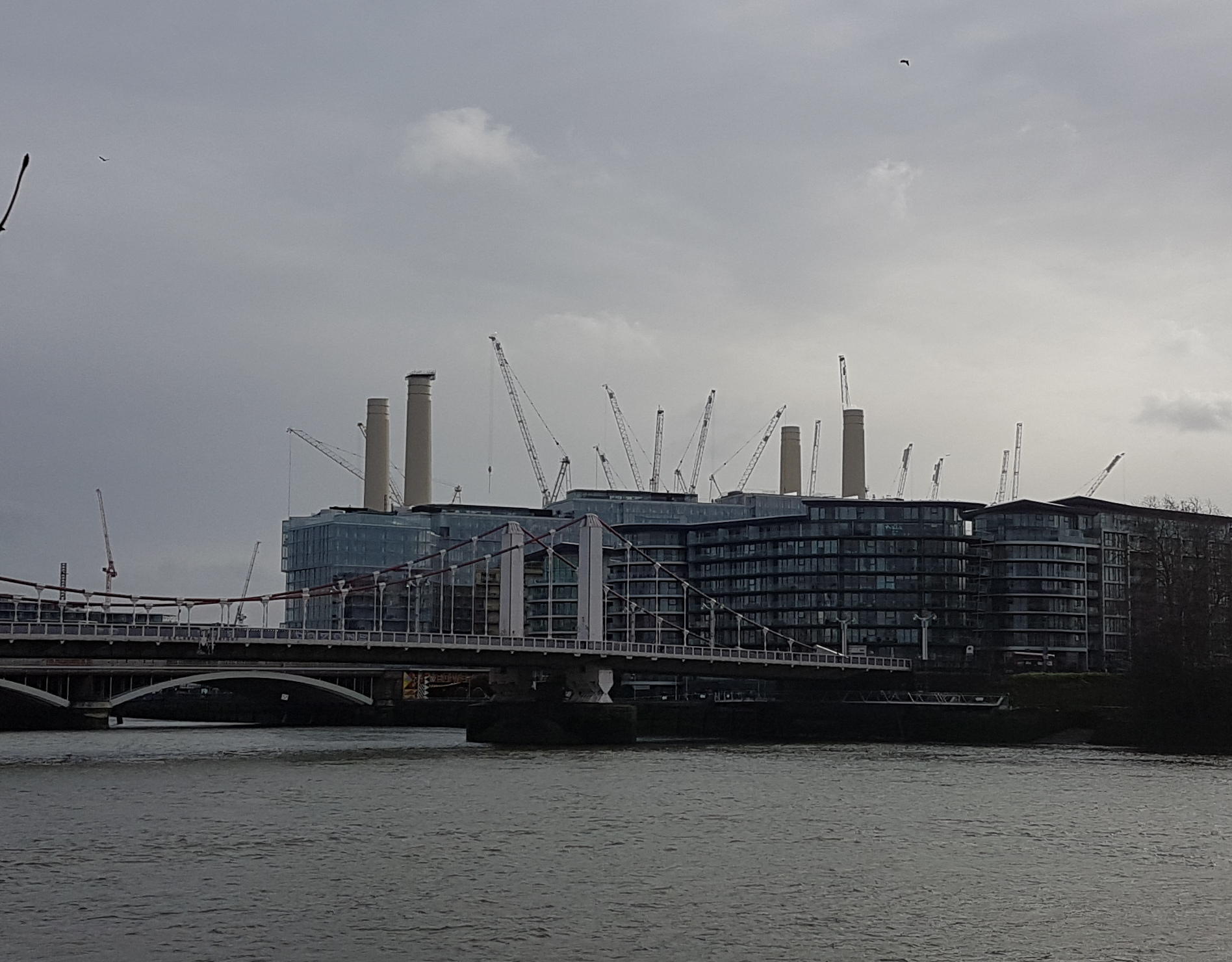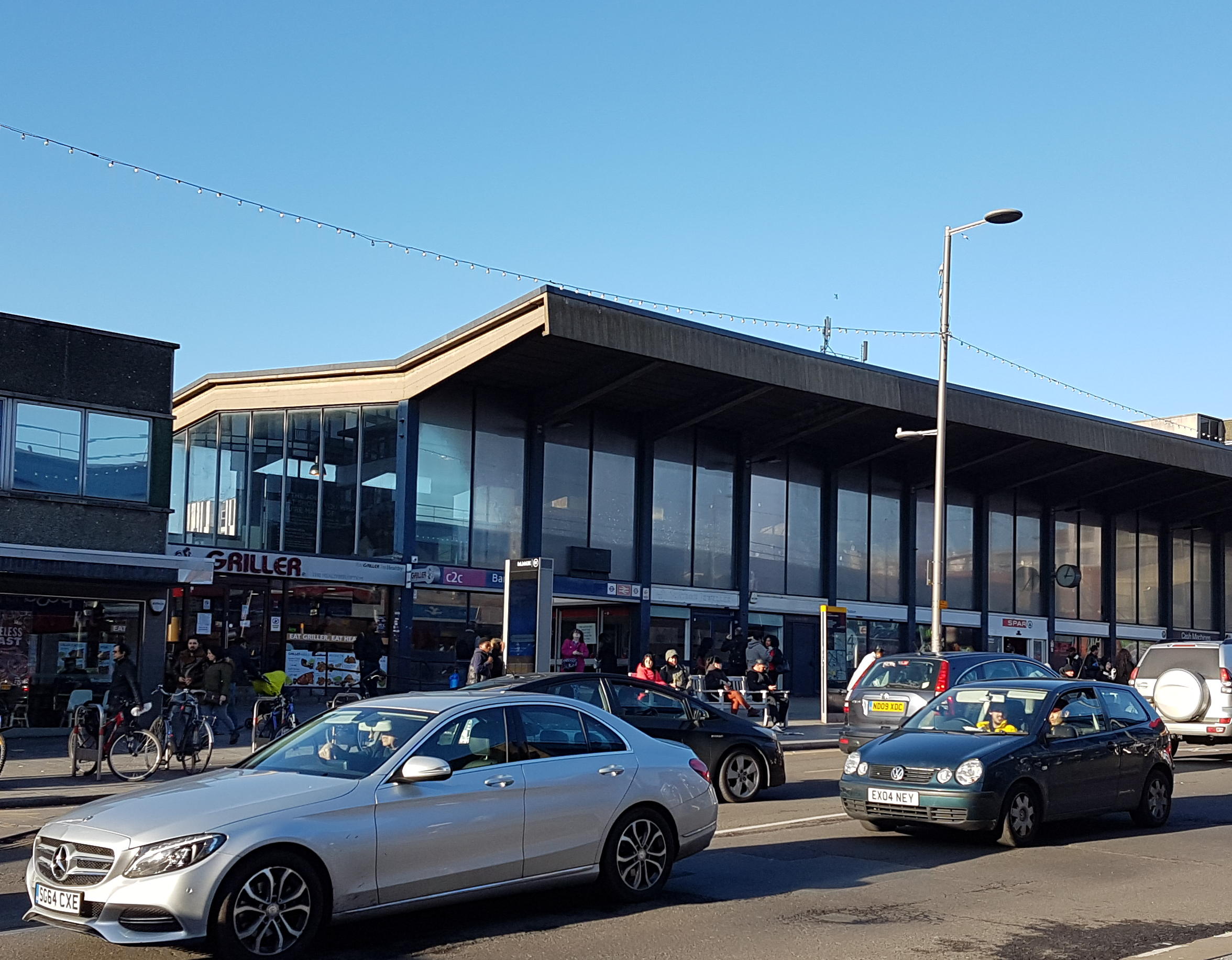| |
Nairn revisited
‘Nairn’s London’ is a guidebook like no other. At one level, it is a gazetteer of all the buildings that Nairn has admired in greater London. But Nairn’s descriptions of the buildings go way beyond Pevsner or any other architectural guide. Nairn responds to the buildings as though they were living, breathing things, in a way that is quite visceral.
The book is illustrated by 100 or so photos. I thought it would interesting to reproduce some of these photos in a 2020 setting, first to see what has changed since 1965, but also to see whether the buildings still evoke the strong emotions that Nairn felt.
St Paul’s at Bankside


In a book full of expressions of ardent admiration, St Paul’s Cathedral elicits probably the strongest of all from Nairn. It has everything that he loved: perfect proportions, a distinctive style, a dramatic setting. He photographed it from Bankside, on the opposite side of the Thames, then an unfashionable location. He loved the contrast between the gritty, river-borne commerce and the sublime edifice towering above it: ‘Look on to the dirty water slapping around the bows of the barges, and the grand unselfconscious row of warehouses on the City side, with St Paul’s suspended at just the right height’. He took his photo from Cardinal Cap Alley, a ‘tube of space’ which was focused serendipitously on the west tower of St Paul’s.
Now the commerce has all gone, but the scene on the south bank is busier than ever, with a continuous stream of tourists (pre-Covid) processing along the bankside walk that, back in 1965, was Nairn’s little secret. City planning guidelines have just about preserved the cathedral’s profile from the encroaching tower blocks, but St Paul’s is nevertheless diminished.
33-35 Eastcheap


Crossing to the City, huge office towers, far higher than anything seen in the 1960s, loom over the historic streets and alleys. But many old buildings have been preserved, notably 33-35 Eastcheap. This building, constructed in 1868, was the London base of the Worcester vinegar merchants Hill & Evans. Its architect, Robert Romieu (1814-1877) exploited the dramatic effect of the Gothic style to the full, and Nairn was suitably impressed: ‘This is truly demoniac, an Edgar Allen Poe of a building’.
As with St Paul’s, the drama has now been diminished by the looming shadow of new buildings, in this case the ‘Walkie Talkie’ behind Eastcheap.
41 Cloth Fair


Nairn’s love of authenticity is manifest in his description of 41 Cloth Fair, the oldest house in London and still a private house: ‘chunky, cantankerous, breaking out all over in oriels and rooflights, unconcerned with academies, fashions or anything else other than shapes to live in’.
Curiously, 41 Cloth Fair, although recognisably the same house in 2020 as in 1965, has lost the patina of authenticity. It has been scrubbed up to such an extent that it no longer looks as though it’s 400 years old.
Lord North Street and St John’s Smith Square


Domestic architecture has survived in better shape in Westminster. Nairn noted that the Georgian streets around the Houses of Parliament were too well-loved by the politicians who lived there to fall victim to the wholesale demolition that was taking place elsewhere in the 1960s. And they have indeed survived intact for another 50 years. Moreover, St John’s Smith Square, derelict in 1965 following damage in the blitz, has been restored. The most noticeable difference between the 1965 and 2020 photos is the number of cars in the street. The solitary Mini has been replaced by a tightly wedged row of vehicles, including a 20th century Mini, a bloated version of its 1960s ancestor.
Portland House


One of Nairn’s more surprising accolades goes to Portland House, in nearby Victoria. In 1965 it was newly built, centrepiece of a modernist development that replaced the former Stag Brewery. Nairn liked its ‘spark’ and the way it rose sheer from ground level.
In the past 50 years, architectural fashion has come full circle. Portland House has had plenty of criticism over the years, but it is now recognized as a ‘brutalist landmark’ in the words of the Architect’s Journal, and the latest plans for the building will, if realised, see it refurbished and its façade cleaned up.
The bigger change between 1965 and 2020 is in the surroundings. The foreground in 1965 is occupied by the bustle of passers-by and pigeons. The Black and White Minstrel Show was in the third year of a ten year run at the Victoria Place Theatre. Today, the last production seen at the Theatre was ‘Hamilton’, but it’s currently closed because of Covid-19, and the pandemic has swept the foreground clear of people.
Battersea Power Station


Nairn loved a landmark building, and in 1965 there were few with more dramatic impact than Battersea Power Station: ‘stage scenery for a riverside opera, splendid in mist or with winter sun behind it’.
Many of Nairn’s favourite landmarks survive, yet are diminished by changes in their surroundings. Battersea Power Station has suffered more than most, with chunky riverside blocks of flats almost completely obscuring the view from the river which Nairn so admired.
Bow Creek


The Thames, and the drama of life on the river, is a recurring theme in ‘Nairn’s London’. Returning downstream, many of the sights of the 1960s have disappeared forever in the redevelopment of Docklands. Where something survives from fifty years ago, it’s a bit like an Anglo-Saxon jewel unearthed in a ploughed field: interesting, even attractive, but shorn of context and difficult to interpret.
So it is with this gateway, formerly the entrance to the Blackwall Goods Yard. Nairn photographed the gateway because he liked the ‘fiercely industrial surroundings’ and the fact that, just the other side, there was unexpected greenery along Bow Creek.
Since 1965, the Goods Yard has closed. The site was sold to the London Dockland Development Corporation in 1983. For a long time, it remained derelict, but it is now the site of huge residential tower blocks, seen in the background to the 2020 picture. The gateway itself is not all it seems: the caducei (symbols of Mercury, patron deity of merchants and travellers) were hacked off by thieves in 1990, so those that adorn the pillars today are replicas.
Barking Station


Finally, a scene that mirrors that of 1965, and even evokes the same emotions as Nairn felt then. British Rail’s Eastern Region had been rebuilding its stations, and at Barking created what Nairn called ‘one of the noblest new buildings in London’. One can see what he meant: the station frontage and its canopy have a bold simplicity. Inside, there was a spacious booking hall. Sadly, this has now been taken over by a clutter of retail outlets, but that’s not evident from outside, where the profile of the station building is the same as 50 years ago. The human characters in the scene strike similar poses: indeed, the little group on the left could be frozen in time.
London: then and now
The landmarks of Nairn’s London have been diminished by fifty more years of development. In many cases, the past has been respected scrupulously, with planners trying to safeguard St Paul’s position in the City skyline, and to protect buildings like 33-35 Eastcheap and 41 Cloth Fair. But it’s impossible to preserve the context that evoked Nairn’s strong emotional reaction to these buildings.
For Nairn, context was vital: London was a great port in in the 1960s, and the trade that was carried out in the city validated, and acted as counterpoint to, the physical infrastructure. Simply comparing Nairn’s photos with their equivalents today does not capture this. The only point of intersection is the relatively mundane one of Barking Station: busier than ever, and still serving its purpose with quiet elegance.
1965 photographs are from Nairn's London, published by Penguin Books, copyright The Estate of Ian Nairn. Permission has been sought to reproduce the photographs.
Return to home page
|
|
















